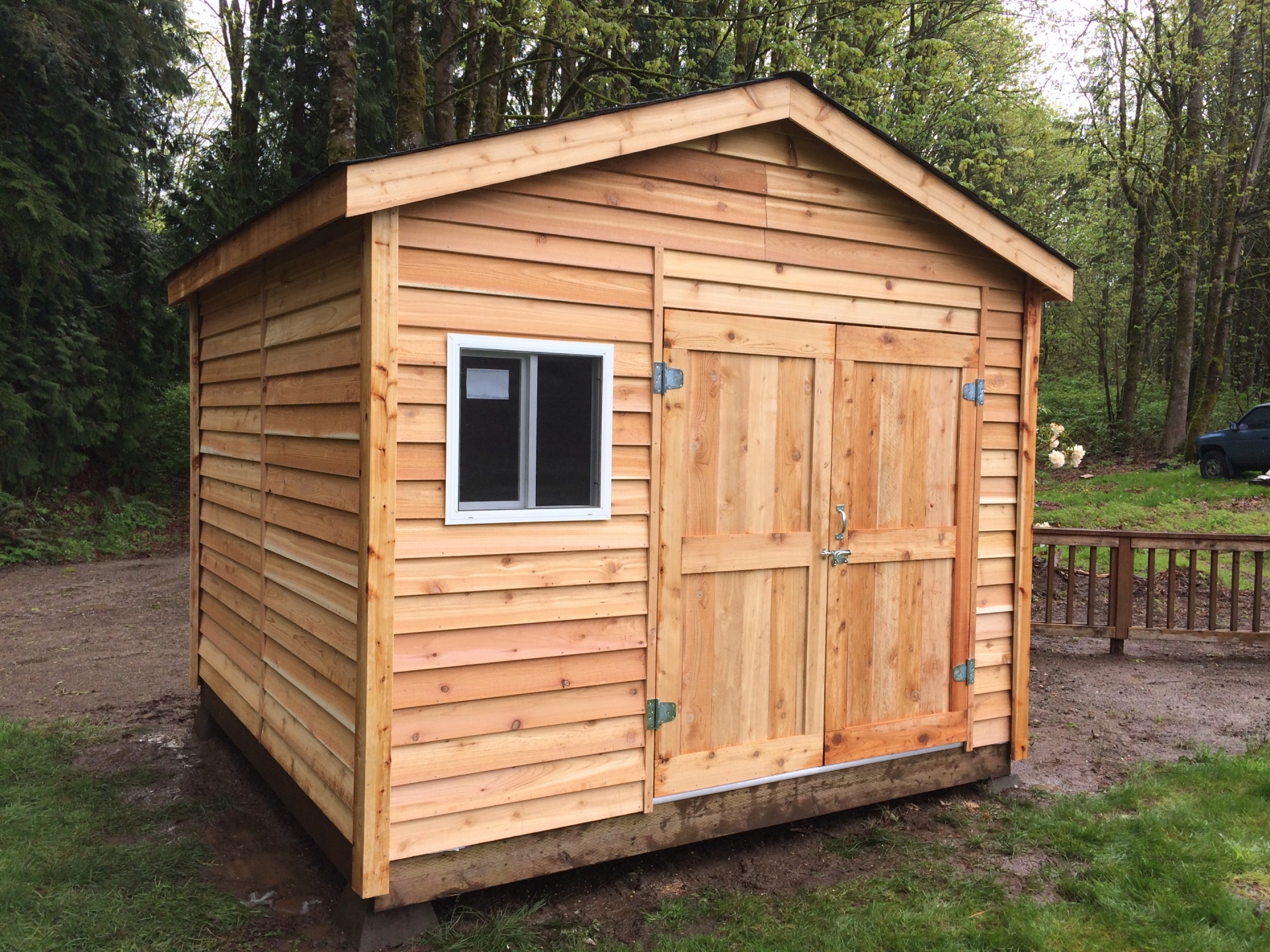Thursday, November 7, 2024
The ultimate guide to 10x12 storage shed plans

Alright, let's talk sheds! Specifically, 10x12 storage sheds. You know, those perfectly sized little havens for all your extra stuff. Whether you're a DIY enthusiast, a gardening guru, or just someone with a house full of "things," building a 10x12 shed can be a fantastic project. It's big enough to be useful, but not so overwhelming that it feels like a full-on construction job.
So, where do we even begin?
1. The Great Planning Session: Getting Your Shed Dream On
Before you get carried away with visions of perfectly organized toolboxes, let's map out the basics. First, check your local building codes. Some places have restrictions on shed size and location. You don't want to build something amazing only to be told to tear it down later!
Now, think about what you want to store. Is this a dedicated gardening shed, a workshop for your crafts, or a general storage space for all those "just in case" items? This will help you decide on features like:
Doors: Single, double, sliding, garage-style?
Windows: For natural light, ventilation, or just a nice view?
Shelving and Storage: Built-in, free-standing, or a mix of both?
Workbenches: Need a space for projects?
Electrical: Do you need outlets for power tools?
Roof style: Gable, shed, hip?
2. The Blueprint: Your Shed's Roadmap
You have two main options for the plans:
DIY Plans: There are tons of free and paid plans available online. Websites like Shed Plans, My Shed Plans, and even Pinterest offer a treasure trove of options.
Custom Plans: If you need something really unique, you can hire an architect or a professional shed designer. They'll create custom plans tailored to your specific needs and preferences.
No matter which route you choose, make sure the plans are detailed and easy to understand. You should have:
Foundation plans: How to build your shed's base.
Wall framing plans: Showing how to assemble the walls.
Roof framing plans: Explaining the roof structure.
Sheathing and siding plans: How to cover the walls and roof.
Window and door plans: Instructions for installing them.
3. The Materials: Choosing Your Shed's Building Blocks
Once you have your plans, it's time to shop!
Lumber: You'll need plenty of treated lumber for the foundation, framing, and sheathing.
Siding: Choose from wood, vinyl, metal, or composite based on your style and budget.
Roofing: Asphalt shingles are common and affordable, but you can also go for metal roofing, cedar shakes, or even a cool green roof.
Doors and windows: Standard sizes are easy to find, but you can customize if you're feeling ambitious.
Hardware: Don't forget screws, nails, anchors, hinges, and other essentials.
4. The Foundation: Building Your Shed's Solid Base
Before you start building, choose the right foundation type:
Concrete Slab: Strongest and most durable but requires professional pouring.
Concrete Piers: Budget-friendly, raised foundation using concrete blocks.
Wood Skids: Easy to install but may not be as durable.
5. The Framing: Creating the Skeleton
Now, this is where the fun begins! Follow your plans carefully and use levelers and plumb lines to ensure straight and strong walls.
Foundation: Attach your wall framing to the foundation using pressure-treated lumber and appropriate fasteners.
Walls: Cut and join the studs to create the walls, ensuring proper bracing and shear panels for stability.
Roof: Follow the plans for rafter placement and construction, making sure to add support beams and purlins for strength.
6. Sheathing and Siding: Covering Your Structure
Sheathing: Use plywood or OSB boards to cover the exterior framing, creating a smooth surface for siding.
Siding: Attach your chosen siding to the sheathing, ensuring proper flashing and water-resistant barriers.
7. Doors and Windows: Adding Style and Functionality
Doors: Install the doors according to the plans, paying attention to the hinge placement and latching mechanism.
Windows: Follow the instructions for installing the windows, making sure they are level and properly sealed.
8. Roofing: Protecting Your Haven From the Elements
Underlayment: Install a layer of felt paper over the roof sheathing to protect the structure from water damage.
Shingles: Begin at the bottom of the roof and work your way up, ensuring each shingle is properly overlapped and secured.
Flashing: Use flashing around vents, chimneys, and other protrusions to prevent leaks.
9. Interior Finish: Personalizing Your Space
Flooring: Choose from options like plywood, concrete, or vinyl for a durable and easy-to-clean surface.
Drywall: If you want a finished look, install drywall on the interior walls and ceiling.
Paint or Stain: Add a touch of color and personality to your shed with paint or stain.
Storage Solutions: Build or buy shelving, drawers, and cabinets to keep everything organized.
10. The Grand Finale: Putting the Finishing Touches
Electrical: If you need power, hire a qualified electrician to run wiring and install outlets.
Lighting: Add interior and exterior lights for visibility and safety.
Landscaping: Finish the project by landscaping around the shed with mulch, plants, and maybe even a small patio area.
A Word on Safety:
Building a shed is a rewarding project, but remember safety first! Always wear appropriate safety gear like eye protection, gloves, and hearing protection. Read the instructions for your tools carefully, and never hesitate to ask for help if you're unsure about anything.
Your 10x12 Storage Shed Awaits!
With a little planning, patience, and a sprinkle of DIY magic, you can create a fantastic storage shed that will serve you well for years to come. Remember, it's your space, so make it a reflection of your unique style and needs. Happy building!
No comments:
Post a Comment
Note: Only a member of this blog may post a comment.